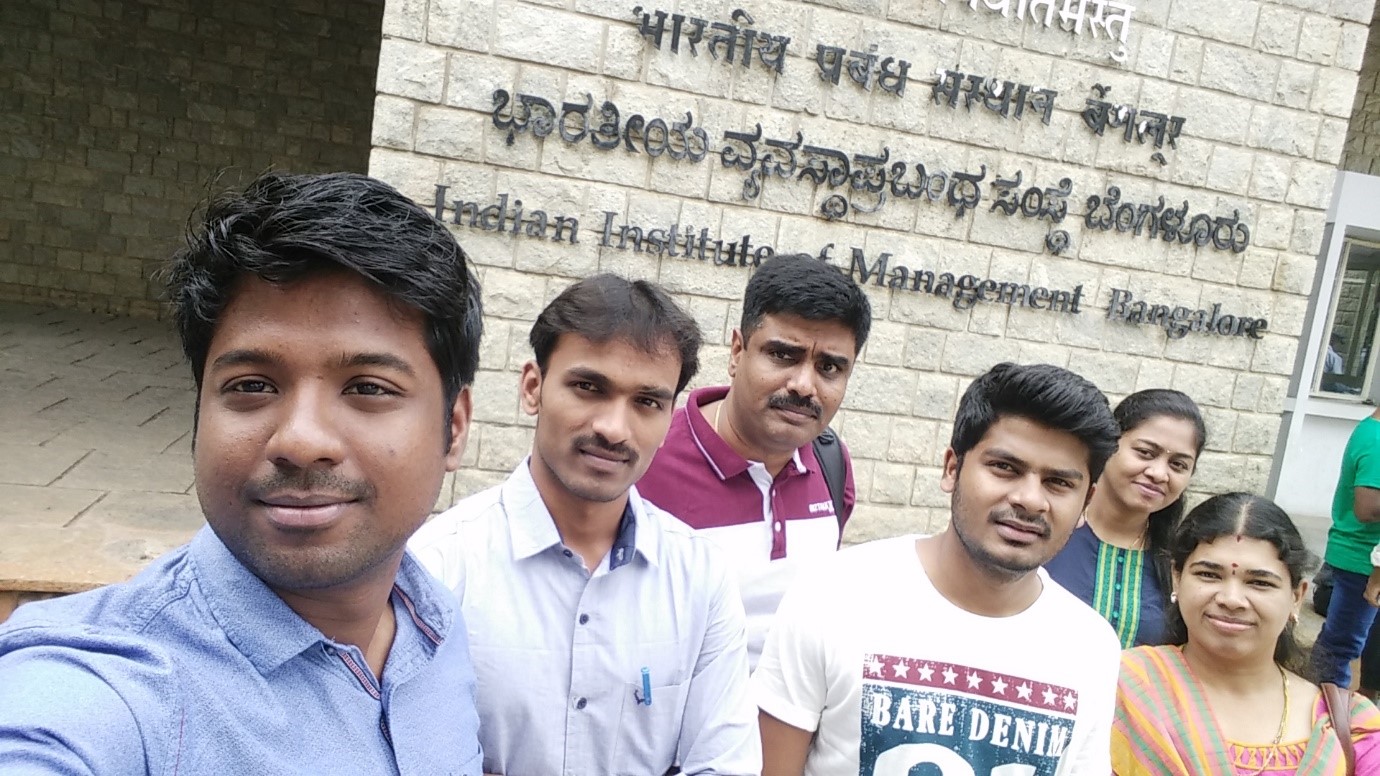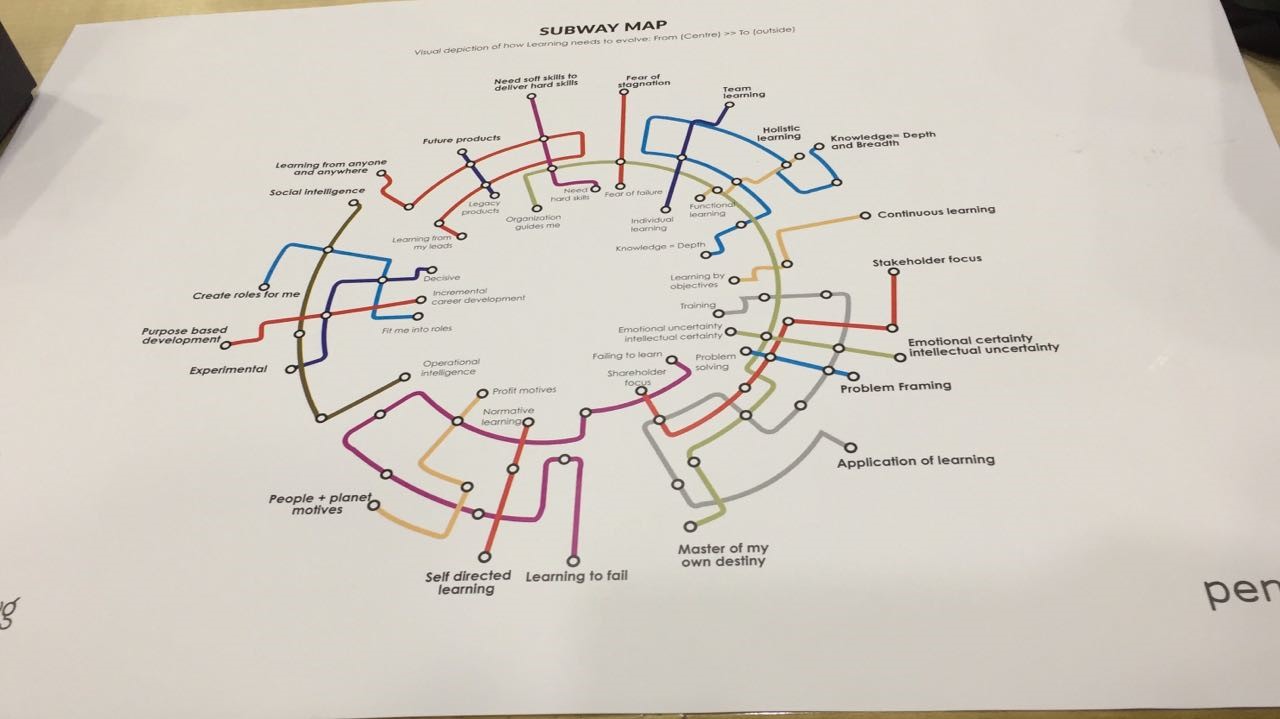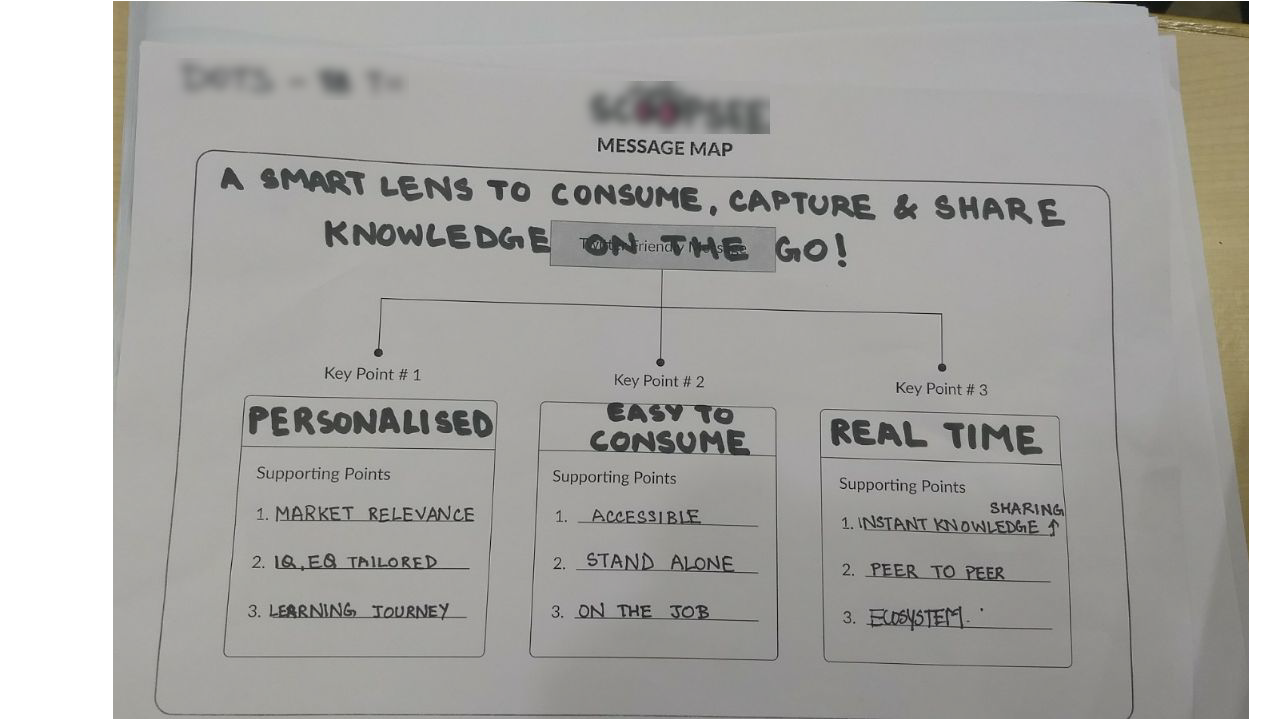Design Thinking –the name sounds different. Can we design our thinking? Yes, we can and this is what we learnt from the
Design Thinking Summit 2017 which was held at IIM Bangalore. We are grateful to our organization for providing us such a wonderful opportunity to participate in this event.
BizTalk360 always focus on the motto “You grow, we grow, together we grow”. In this way, they always help the employees acquire skills through different learning and training programs. One such opportunity was given to 6 of us to attend the Design Thinking Summit 2017 and I am lucky to be the one among them. In this blog,
I would like to share my experiences in the DTSummit. Special thanks to
Saranya and
Umamaheshwaran for adding more meaning to this blog by sharing their experiences.

An intro to Design Thinking Summit – Insight:
Design Thinking is a creative, repeatable, human centered approach to problem-solving and innovation. It draws upon experience, imagination, intuition, and reasoning to explore possibilities of what could be—to create desired outcomes that benefit your customers. This summit was organized by a group called Pensaar, powered by a team of highly experienced design thinkers and problem solvers. Over the 3-day workshop conducted by Pensaar team, we learnt how to understand customers, articulate insights that will inspire innovation, ideate till you get disruptive ideas that we can rapidly test with customers. It is focused on learning by doing. All while experimenting, experiencing, having fun and being surprised. There were around 160 participants this year for the DTSummit.
Day 1 at the Design Thinking Summit:
It was all new for our BizTalk360 team about the event. We were asked to assemble in the event venue at 8.30 AM. To our surprise, the participants were split into different teams and each one of us was in the different team. This was a nice experience as we got to know different people as the participants were people from different professionals. We were given cards with our photo attached and the table number written on it. Everything was a team activity with a team coordinator for each team.
Design think involves four stages namely
- Discover – understand people and their ideas
- Insight – Identify trends and inspire innovation
- Dream – Ideate solutions for problem statements defined
- Disrupt – Prototyping techniques that visualize solutions

The first day was about “Insight”. The first step towards insight is “Discover”. The foremost task is to understand people and their ideas. The “Insight” stands for identifying trends and pattern of data which will inspire innovation. The below quote explains it.
Fall in love with the problem and not with the solution
Products must be created for behaviors and not for intentions
The first day started with an event to come up with an innovative team name for each team. The stationeries were provided along with post-its. An interesting this to be noted at the venue (IIM- Bangalore) was that plastics are banned and we were given glass water bottles with our names printed on them. There were around 12 teams and each team came up with unique names.
The interesting interview:
The next event was an interesting interview with a reputed industrialist. The aim was to capture the insights of the person and utilize them for a better understanding of the requirements. We were asked to listen to the interview and note down our points in the post – its. The important feature of the post is that we cannot write long stories in it. The notes must be short and understandable. Hence, we need to make sure we have better words to describe our points and ideas. Some of the key insights derived from the interview were:
- Be focussed on process
- Build expertise and use them when opportunity is given
- Soft skills to be more focused.
For example, consider a scenario where we gather the requirements for a product from a customer. The skills to be observed in this process is:
- Asking open ended questions
- Listening skills
- Observing skills
The Research Methodology:
Once the customer requirements are gathered, the next step is to dig deep into them for better understanding. One of the research methodologies was:
Ecosystem Map:
This is a visual representation of landscape within which a problem exists. The map contains the connections between the different stakeholders involved in the problem. We can visually depict the interconnections and inter-dependencies between the stakeholders in the system. This way we can draw key inferences and insights by asking questions like, what are the challenges in the system, what can be improved, what interventions can be made to make a positive impact.
Arriving at the problem statement:
We now have the ecosystem map. The next activity is to identify the problem statement. We can consider anyone of the stakeholders and derive the statement for them. The stakeholder may be a customer, an employee, the government or the senior management of the organization. Each individual team member was asked to write down his/her problem statement based upon the following points describing:
- User characteristics
- Outcome the user tries to achieve
- Barrier existing to achieve the outcome
- Root cause of the barrier
- How the user feels because of the root cause and the barrier
This problem statement is important because it is from this point, we will move forward in deriving the solution for them. From the individual points, the team coordinator would discuss and come with a single problem statement for the team. The problem statement is written from the user’s point of view and it helps to identify and articulate the right problem to solve for the users.
There are different tools which help us in deriving the problem statement which may be:
Empathy map – mapping the different data points for the user
Subway map – plotting the objectives with respect to the current state and prioritizing them.
 User persona
User persona – Using quote cards, we can derive the insights for different problems given in the cards.
Journey line – steps involved from arriving at the problem statement to improving on the solutions
These tools are considered the convergent research technique tools for understanding the problem better. At the end of the first day, the Pensaar team collected the feedback about the activities conducted.
Day 2 at the Design Thinking Summit:
The first day went interesting and the outcome was the problem statement. Now comes the second day of the event. We were all more excited for the second-day activities. The second day started with the Introduction of the Pensaar team, who are behind the screen for this wonderful Summit.
The agenda for this day was “Dream”. The first day resulted in finding the problem statement with the insights obtained from the different groups. Now, we need to walk our way to find the solution for this problem. But that would not be so easy. One problem statement would be worked upon by all the 12 teams. So, there would be different solutions and it’s important that we identify the best solution.
Arriving at the Customer Benefits:
The first activity for the second day was to “Identify three key customer benefits”. Customer benefit leads to improvement in customers’ life. It is what matters most to the customer when choosing our product over others. The benefits can be measured through certain metrics, which help you in identifying right priorities to acquire many customers. It can be done by crafting a creative Q starting with “How might we”. This lets you to reframe the problem as an opportunity and ideate solutions with a sense of optimism and see the possibilities
Lunch break:
There was another surprise waiting for us during the lunch break. It was picnic lunch for each team. The team members had to collect the lunch for their team mates and have under the trees in a different area. This was very interesting and we all enjoyed it.
Tools for Ideating:
The next step is to ideate solutions for the problem statement based on the key customer benefits. This was the next activity given. There are various tools that are used for the ideation and few of them were given for the teams for activity. Few among them are:
Question storming:
This is a method for discovering the questions to make breakthrough differences in problem-solving, innovation, operational excellence and culture. The questions must be focussed on the facts and situation to get the root of a problem.
Emerging Tech cards:
These are small cards containing information about the emerging technologies in different areas. The activity was to identify the relevant tech card and find out how to make use of it in identifying the solution to the problem.

Biomimicry:
This is drawing inspiration from nature to design the solution. Simply put its mimicking nature to inspire sustainable and innovation solution. We can take an example of ants and their ability to self-organize to find the shortest route. This can be used to find the best solution.
World Café:
This was a post lunch activity. The teams were asked to write the problem statement and the ideas for a different solution. It is to build a collaboration among the teams than to be an individual. So each team member would be visiting other teams to gather knowledge about their ideas and provide some inputs for the improvements.
With this activity, we came to an end for the second day.
Day 3 at the Design Thinking Summit:
The day 3 was even more filled with enthusiasm among the team because we all had new friends and the past two days gave us a different experience. This day started with the activity for “Disrupt”. This will develop prototypes for the solutions derived and then be experimenting them. It started with
Story Board:
It’s a visual tool to build a narrative around the solution to get feedback and refine the concept. The teams were asked to build the story board with their problem statement and the solutions.

Message Map:
This is an excellent tool to create an elevator pitch to communicate our concept to users in less than 15 secs. The steps include creating a Twitter-friendly message about the solution and adding supporting points to explain it.

Experimenting the solution:
The final activity of the event was experimenting the solutions. Each team was asked to create an experiment card which includes the hypothesis, the experiment. Metric and the outcome. With this card, we can experiment our solutions with different users and find the outcome. The teams move around IIM to find the users and the filled in those cards according to the responses received. It was totally a different experience where we also traveled out to find the users and got the feedback from them.
Conclusion:
It was totally a fantastic experience for all of us. Design thinking starts from identifying the exact problem statement (Insight), ideating through different solutions (Dream) and experimenting those ideas (Disrupt) for the development of an employee as well as an organization. These tools can also be utilized in our day to day activities for the betterment of our life as well as career. Thanks to
BizTalk360 for giving us a chance to participate in this event and looking forward to more such events.


 The first day was about “Insight”. The first step towards insight is “Discover”. The foremost task is to understand people and their ideas. The “Insight” stands for identifying trends and pattern of data which will inspire innovation. The below quote explains it.
The first day was about “Insight”. The first step towards insight is “Discover”. The foremost task is to understand people and their ideas. The “Insight” stands for identifying trends and pattern of data which will inspire innovation. The below quote explains it.
 User persona – Using quote cards, we can derive the insights for different problems given in the cards.
Journey line – steps involved from arriving at the problem statement to improving on the solutions
These tools are considered the convergent research technique tools for understanding the problem better. At the end of the first day, the Pensaar team collected the feedback about the activities conducted.
User persona – Using quote cards, we can derive the insights for different problems given in the cards.
Journey line – steps involved from arriving at the problem statement to improving on the solutions
These tools are considered the convergent research technique tools for understanding the problem better. At the end of the first day, the Pensaar team collected the feedback about the activities conducted.


